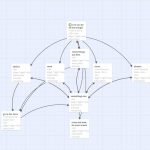Here are some samples of the work I’ve done. You can find more recent work – and even live training courses for teachers, gamers and makers – at my eLearning site.
Scenario-Based Learning Projects
Twine is a free tool for creating branching stories. As a learning design tool for scenario-based learning, it’s fairly powerful, allowing the designer to integrate multimedia (pictures, video and sound) in a variety of ways, track variables, use conditional formatting and story flow. The following projects were created in Twine during my coursework in the IDT program at Bowling Green State University.
Get the Job Done
Learning Center Tutor Training
Rapid Design (Captivate) eLearning Modules
Newton’s First Law of Motion
This was a group project, and an early effort in using Adobe Captivate. The object of the lesson was to teach Newton’s First Law of Motion to high school learners. It uses standard interactive quizzing and knowledge check features from Captivate, as well as manual slide control and the ability to review sections before knowledge checks. The slides were developed and designed collaboratively with two students in a course in the IDT program at Bowling Green State University.
The image below links to the live HTML version of the module and will open in a new tab.
Introduction to 3D Printing
This project was intended to offer a brief introduction to consumer 3D printing. It covers an introduction to the mechanics of a FDM consumer 3D Printer, the principles of slicing a model to prepare it for printing, tuning the preparation to balance quality vs speed in printing, and online resources for finding models and slicing software. Some elements in the design (certain rollovers and the glossary tool) did not port to HTML5 successfully and work better when the module is exported as an .exe file (as the design was intended).
This module will be updated, redesigned, and available on my eLearning site soon.
The image below links to the live HTML version of the module and will open in a new tab.
Video eLearning and Google Classroom
The following are learning design projects from various courses in the IDT program. Some are videos used for Microlearning on specific topics in Learning Design, and one is a more extensive Google Classroom course (soon to be adapted to the Brainchaw eLearning site).
Gagne’s 9 Events of Instruction
This project was developed in Camtasia, and designed as a microlearning module on Robert Gagne’s 9 Events of Instruction. The goal of the project was to structure research on Gagne’s ideas into a compact learning module, driven by narration and video, and enhanced by design elements. There are no assessments with this assignment as it was intended as a presentation to peers in a learning design course. The video is 15:26 long.
The video references a handout, intended to be used as a learning guide. You can download it here.
What is Mobile Learning?
This short video was designed to introduce the topic of Mobile Learning and emphasize its value to an organization. It was developed in Captivate, but does not use any of Captivate’s built-in quizzing tools or interactive elements. Captivate was only used as a tool to animate, combine narration, and time the slides. The learning outcomes are simple – identify the elements of Mobile learning and how it is effective as a learning delivery method. The video is 5:28 long.
Google Classroom Course on Mobile First Design
If you have a personal GMail account, you can access my Google Classroom course on Mobile First Design using the link and code below. If your organization uses GSuite, you will not be able to use that email address (even if it is a GMail account) to access this course – you can only use a personal GMail account.
The course itself uses the videos below as the two primary content delivery tools, but supplements them with a number of resources to scaffold and enhance learning. There is a course outline with guiding questions to help students structure the information; several Google Forms for collecting feedback, reflecting on experience, and knowledge checks; and content summaries (part 1, part 2) following each video. There are also links to examples, youtube videos, and a case study to help students see the principles as they are applied. The video above (What is Mobile Learning?) was also linked to establish a common background for learners in the course.
Google Classroom Code: gg1cyp
Google Classroom Link: https://classroom.google.com/c/MjQ5OTI5MDkzODZa
I have linked the videos from the course below. (Part 1: 4:25, Part 2: 5:18)
LMS eLearning Courses
Brainchaw eLearning
As a final project in the IDT program at Bowling Green State University, I designed a course in Gameful Design using the ADDIE model. This project audience is 9-12 High School teachers, and began with an extensive learner assessment using the CBAM (Concerns-based Adoption Model) to assess their readiness to adopt new EI (Educational Innovations), as well as their experience with games and game mechanics. This data was used to design content for the course, as well as learning activities based in Adult Learning Theories.
As a delivery vehicle for the course, I decided to work with Moodle – a free, open-source LMS – and set up a full LMS. This seemed the most effective way to host the various lessons and delivery modes, while incorporating the ability for learners to engage in reflection exercises, group activities, and to track and measure learning using Moodle’s built-in tools.
At this point, I’m still finishing up the delivery and implementation of a few of the lessons, but the LMS is live, the course shell is active, and it is designed to be mobile-ready – Moodle comes with an app that can house the learner’s login credentials and point toward the eLearning site for anywhere/anytime learning.
You can access the site by clicking the image below, and logging-in using these credentials:
U: lrnd6910
P: Learning6910!





